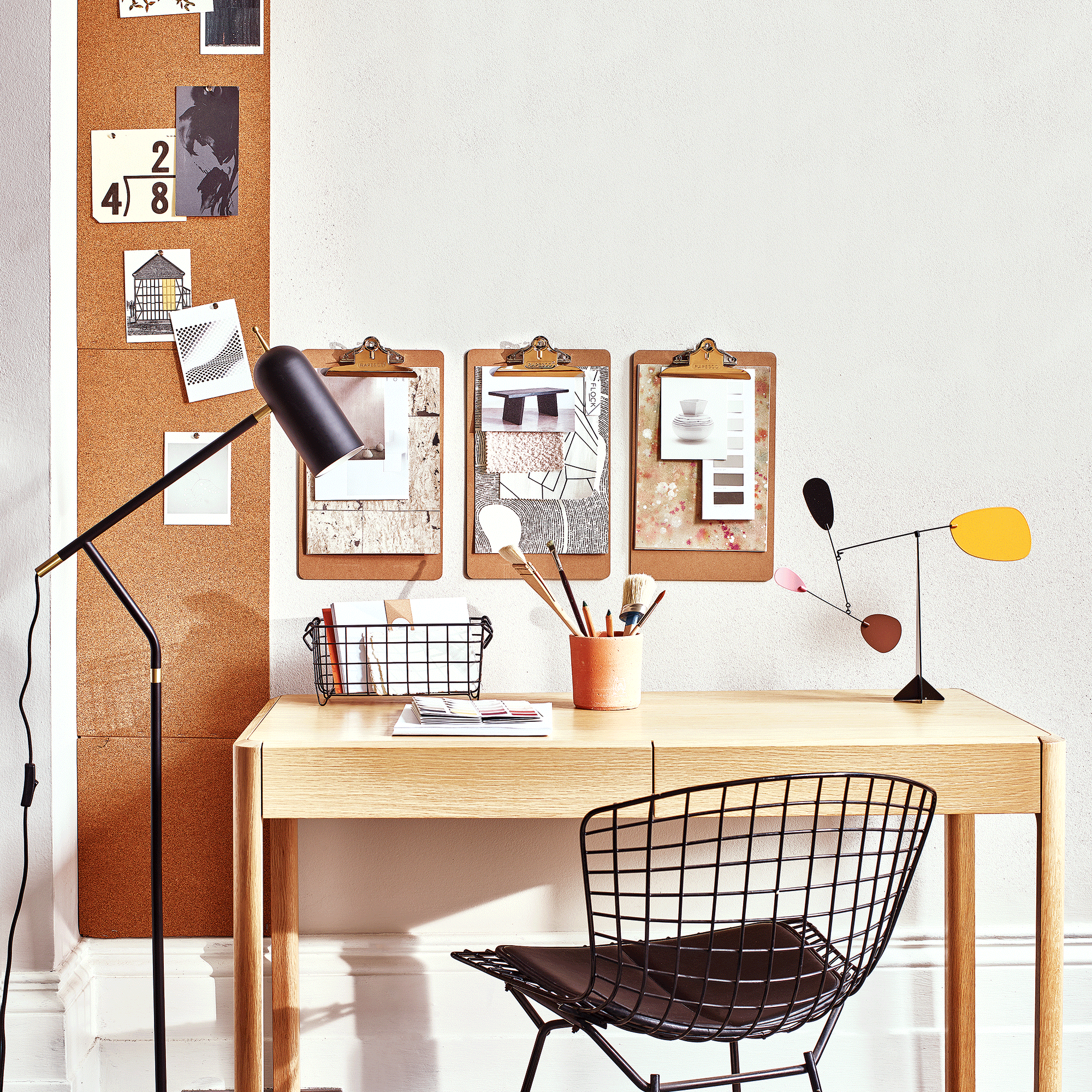
There's an art to organising a desk and keeping it in ship shape. So we called in the experts to pick their brains on how to keep our desks in order.
As the saying 'tidy desk, tidy mind,' goes, genius home office storage ideas prove to be pretty important for productivity and mental health, especially if you're working in a small home office.
‘As a former executive assistant, I understand the importance of a well-organised desk for optimal productivity,’ says Emily Mills. ‘In a home setting, where a desk might serve multiple purposes, such as remote working, children’s homework and household paperwork, keeping things orderly is essential.’
Clare Evans, a time management and productivity coach, and author of Time Management for Dummies, says, ‘If your workspace is disorganised chaos and causing you stress, or distracts you from getting on with things, get it organised. A place for everything and everything in its place. This saves time and energy when you need to find something, whether it’s a file, folder or piece of stationery. Use a system that works for you.'
‘Having an organised desk doesn’t mean it has to be clear and minimalistic. A “messy” desk can be a sign of creativity or work in progress. Everyone’s different. Some people like to have things close at hand, which might mean in view. Others get distracted by the merest hint of clutter and don’t have anything other than their laptop.’
From decluttering to the best storage solutions and stay-tidy habits, these are our experts’ work-in-real-life tips...
How to organise a desk effectively
Start by decluttering, then reset your workspace by allocating items to keep on the desktop and items to relegate to drawers or nearby shelves.
At that point, you’ll need to develop a system for your drawers and create homes for small items that’ll just rattle around inside.
Finally, clutter-proof your workspace with solutions for family members who share it with you and strategies for keeping it tidy.
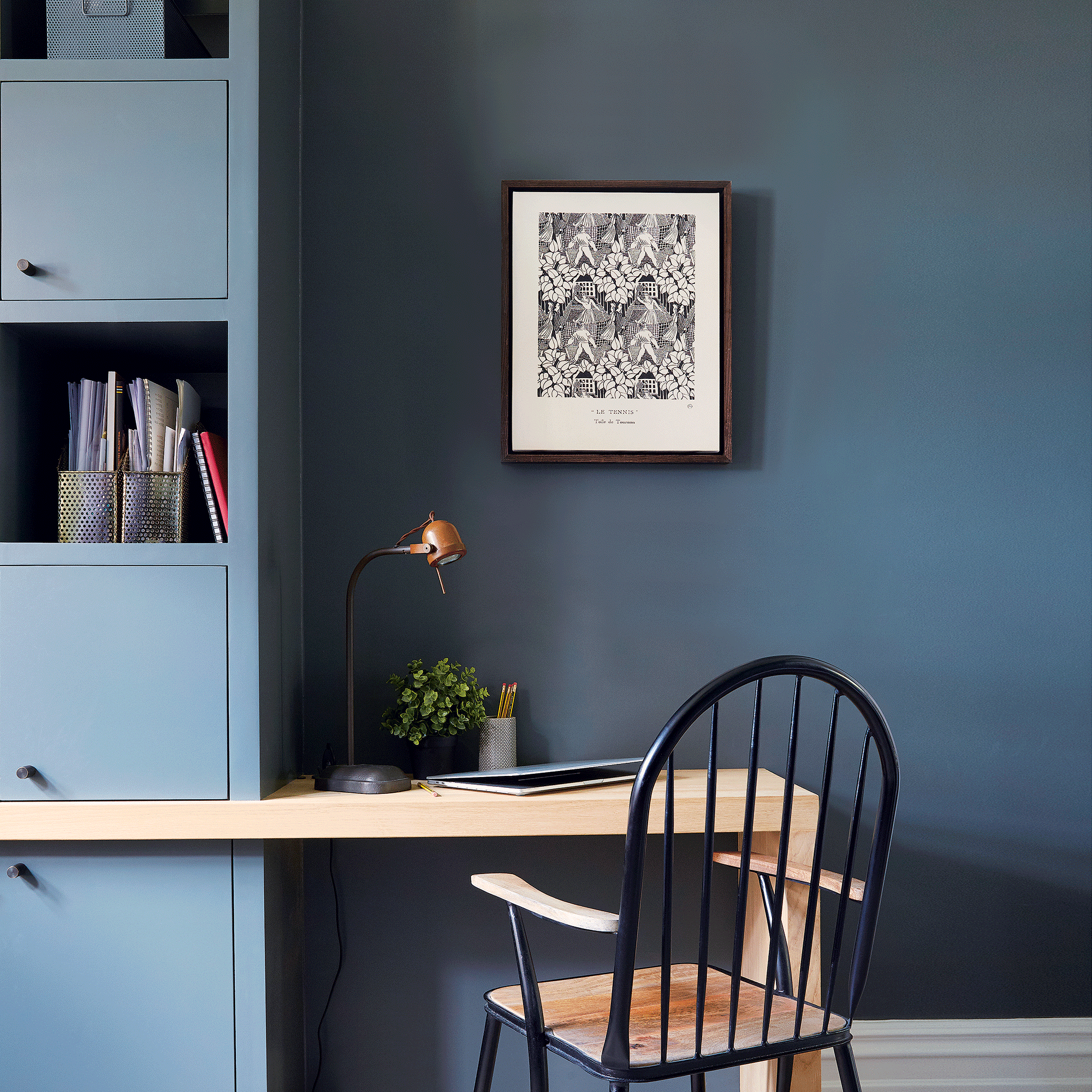
Why is it important to have an organised desk?
Former executive assistant Emily Mills says, ‘A clutter-free workspace significantly impacts mental health, fostering a sense of calm and aiding concentration. Prioritising ergonomics is also crucial to safeguard your physical well-being by mitigating the risk of strain or injury.
‘A tidy setup is imperative for virtual meetings as it maintains an air of professionalism and optimises your efficiency. A healthy working space bolsters productivity as it curtails distractions and facilitates focused work. Ultimately, a well-organised workspace facilitates seamless transitions between work and personal responsibilities, embodying adaptability – a requirement for all our lifestyles.’
7 expert tips for organising a desk
1. Declutter it
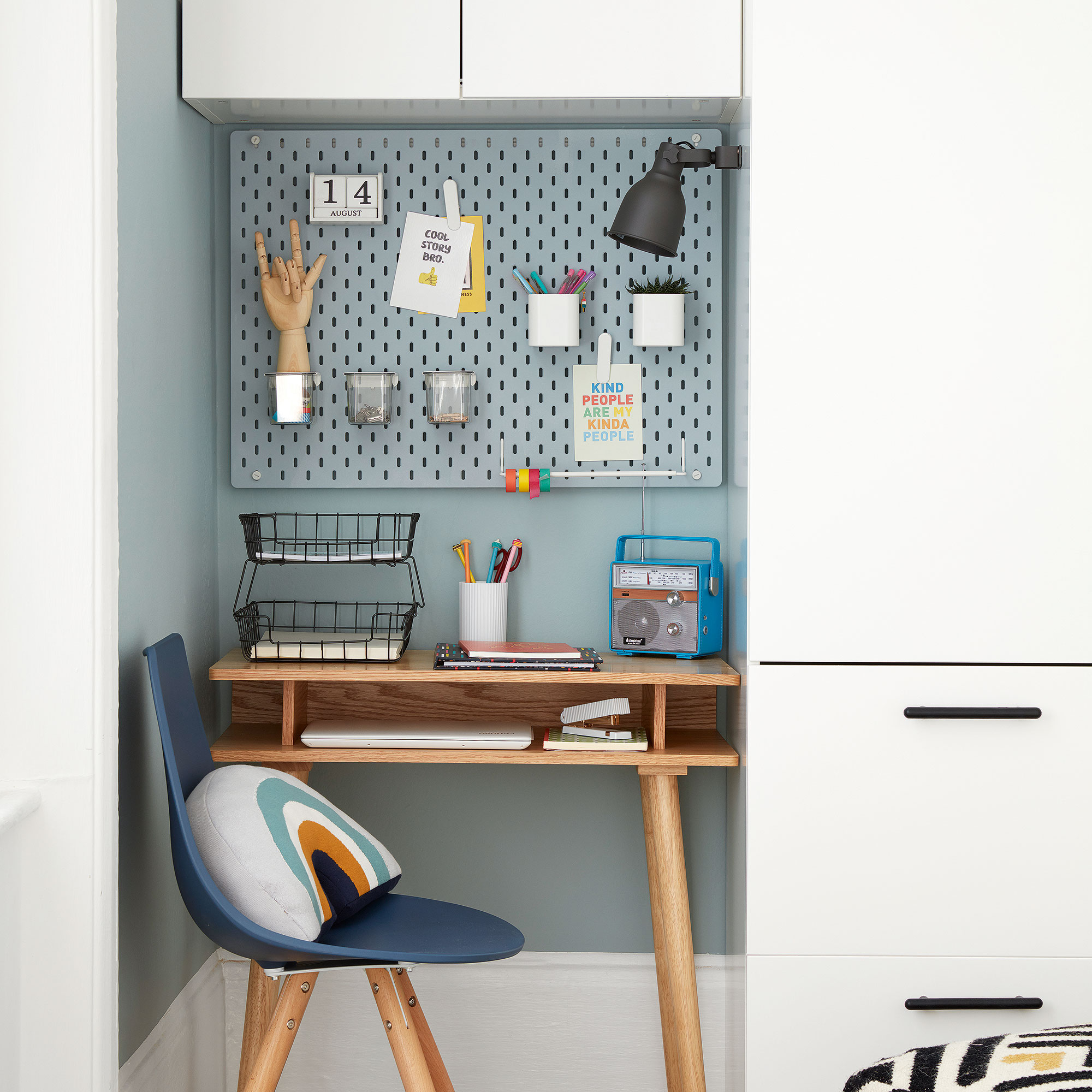
Lisa Coe, professional organiser, advises, ‘To make the most efficient use of your workspace, ensure that you’re only keeping the items you use, so a ruthless declutter will free up additional space. Set aside a few minutes at the end of the day to clear your desktop and put everything back in its place, so your desk will be a calm and welcoming space the following day.’
Emily Mills recommends scheduling regular sessions for a deeper declutter: ‘Do this once a week, perhaps, to remove items that are no longer needed and reassess what should stay on the desktop.’
2. Decide what to keep on the desktop

This is Emily Mills’s list of desktop essentials:
- ‘Monitor and laptop (with monitor stand if necessary, to have the screen at eye level to avoid neck strain), plus keyboard and mouse, if used.
- A notebook or planner.
- A pen holder with a few essential writing instruments.
- A desk lamp like this Baldwin desk lamp from John Lewis for proper lighting.
- A small tray for items like paperclips.
- Personal touches, such as a small photo frame or a plant to make the space inviting without overloading it.
- ‘Plus, use cable organisers or clips to keep cords neat and out of the way.’ These cable clips from Amazon fit the bill nicely.
Lisa Coe would add a coaster to that list, to protect your desk from hot drinks, and advises, ‘If you have a lot of devices that need charging, a charging pad is a great way to avoid having multiple chargers collecting on your desktop.’
Fellow professional organiser, Katherine Blackler, believes in having an old-fashioned egg timer or TimeTimer device on hand, too, for managing time spent on tasks: ‘Mobiles obviously have this function, but they also have the temptation of social media and messaging to distract you.’
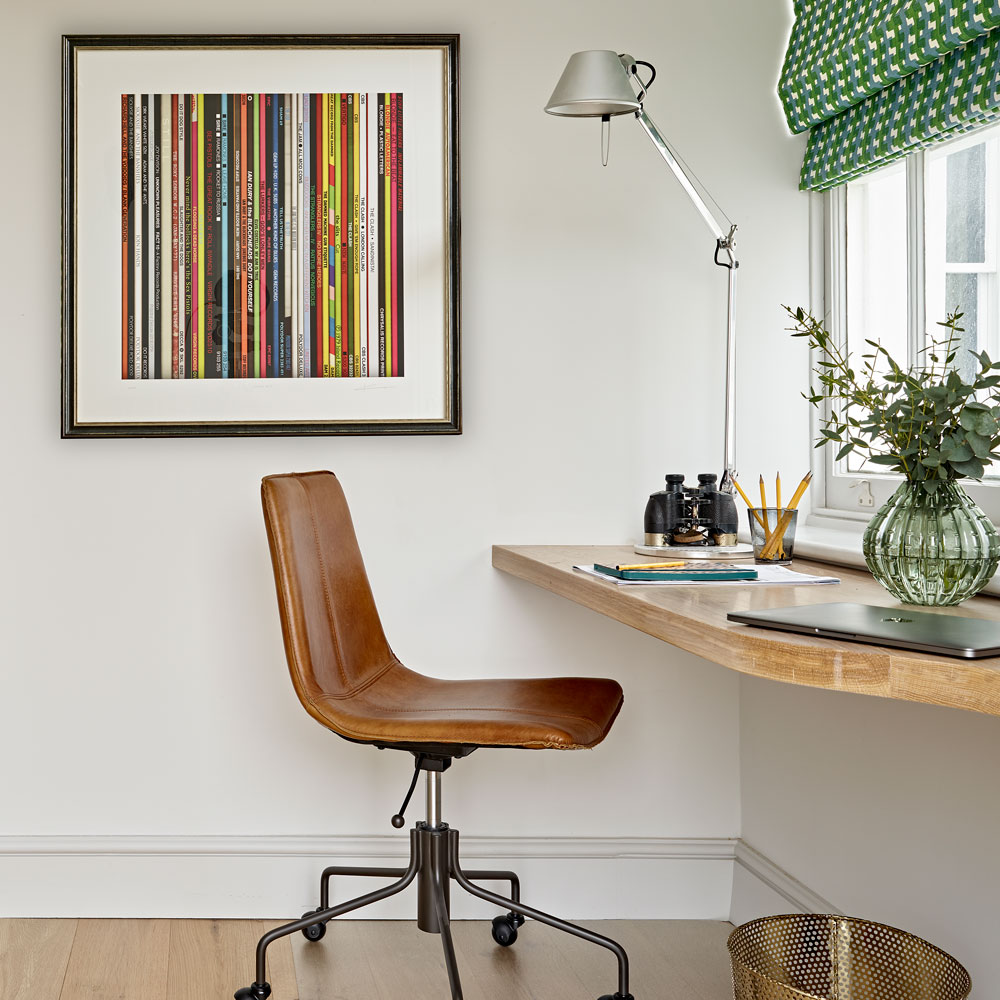
3. Keep ‘in progress’ projects sorted
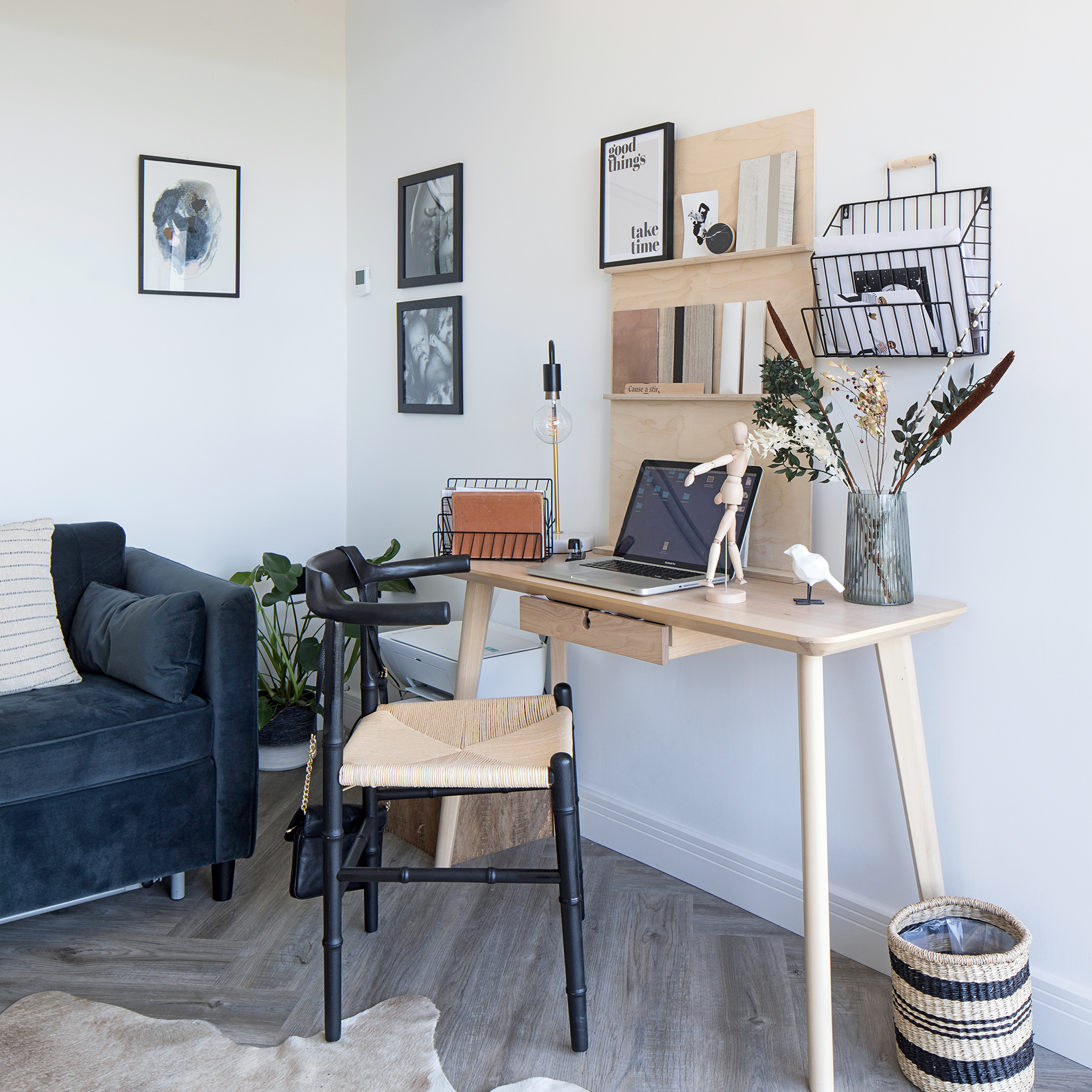
KonMari consultant Sue Spencer advises against an in tray: ‘This can quickly overflow,’ she warns. ‘I like to use magazine holders like these from Habitat instead. This means you can store paperwork vertically which takes up less space and it’s easier to flick through your notes to see what’s there. I use plastic wallets inside them to keep related papers together. For larger projects or archived ones, I use box files (like these from Pukka Stationery available at Amazon).’
4. Systemise your desk drawers
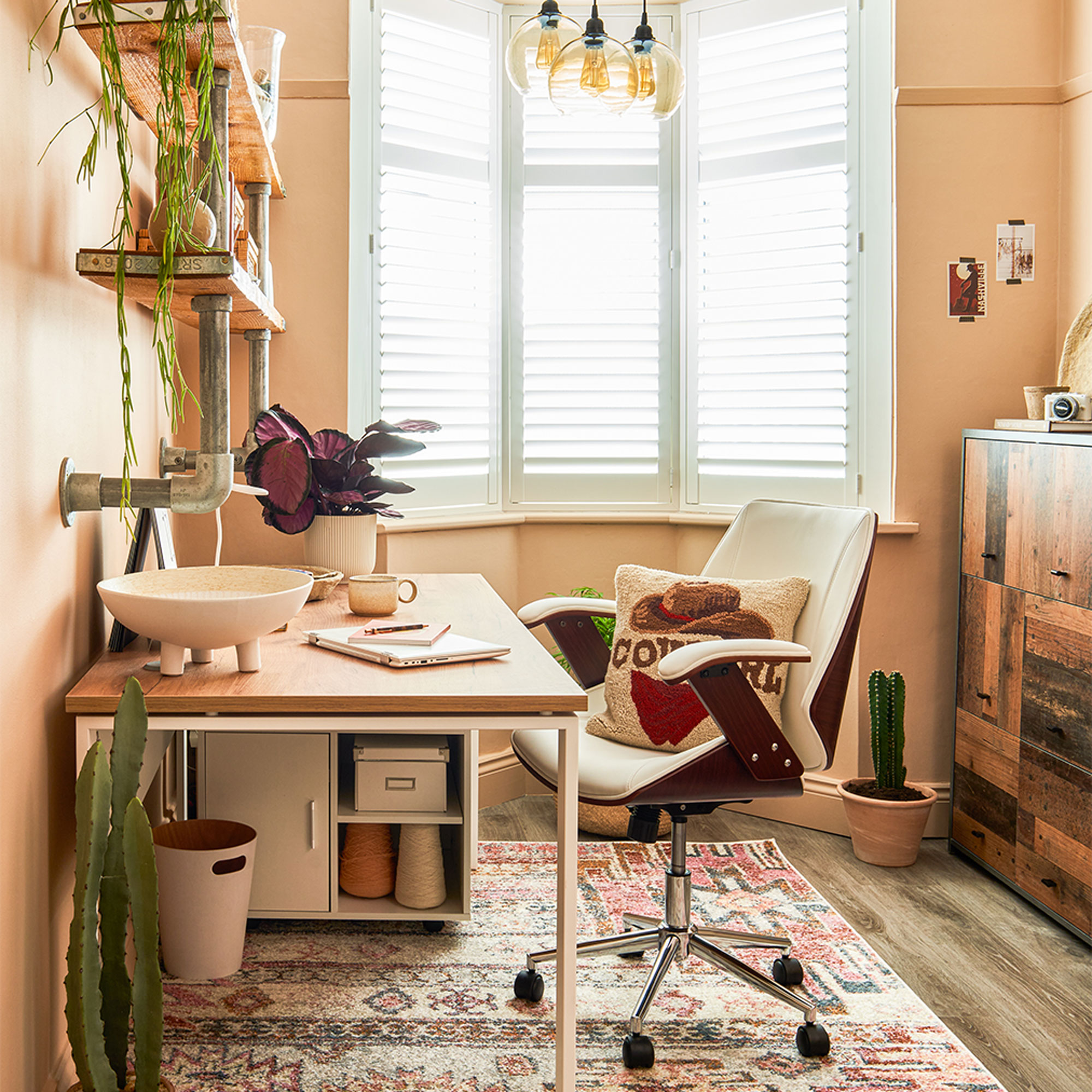
Workplace organisation ninja Emily Mills developed this system over the years as an executive assistant:
‘Use the top drawer for items you use regularly, but do not need to keep on the desktop. This might include pens, pencils and highlighters, sticky notes, notepads, chargers and cables (coiled and tied).
‘In the middle drawer, store less frequently used items such as envelopes, stamps, stapler, hole punch and other tools, and spare batteries.
‘The bottom drawer can hold bulkier items or those used sporadically, such as box files and folders, extra stationery supplies and children’s homework materials that are not needed daily.’
5. Sort the small stuff
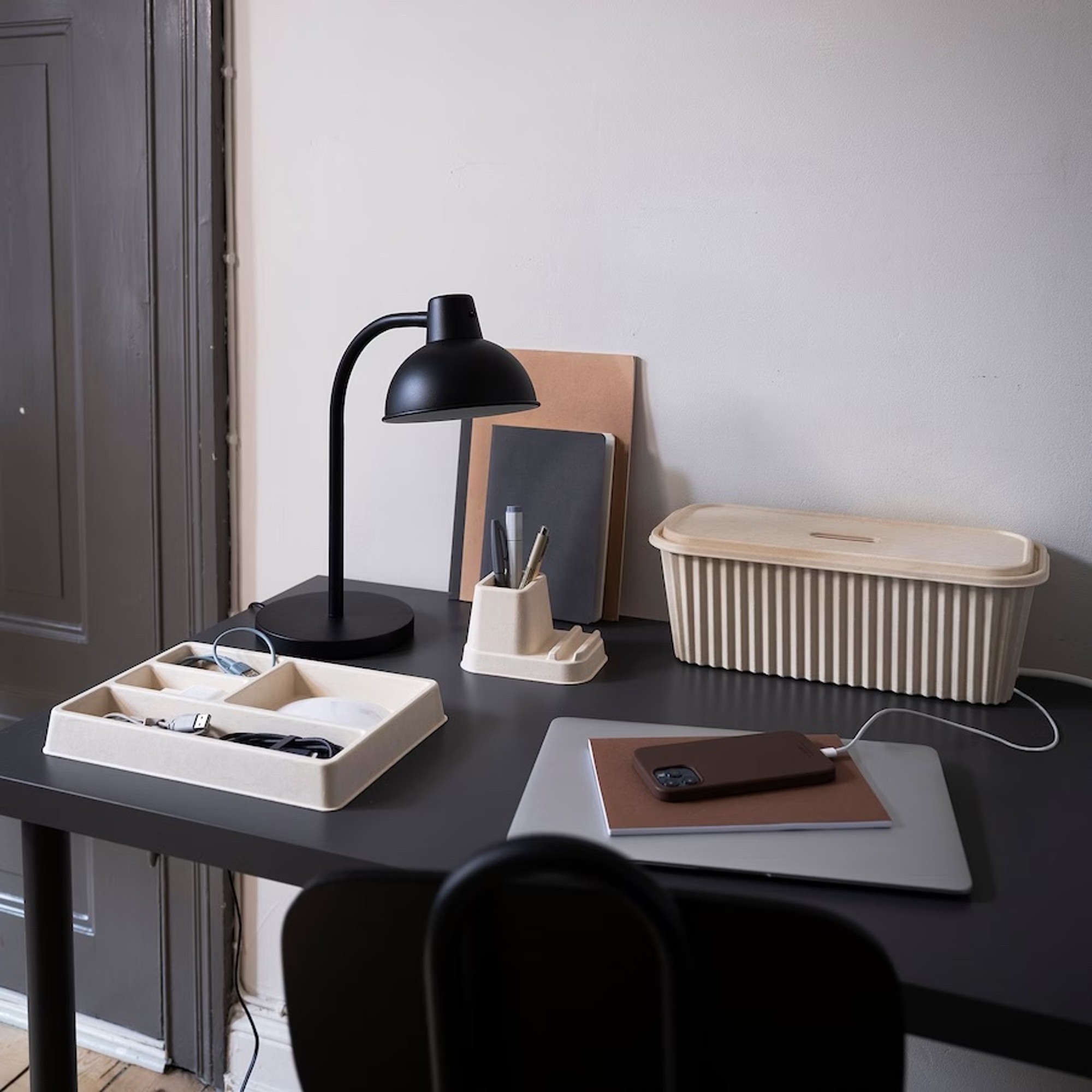
If your drawer is an explosion of loose pens and paperclips, you need storage within storage in the form of a junk drawer.
Professional declutterer and organiser Janine McDonald reveals, ‘I use containers to create compartments within a drawer. You could use small jars for paperclips and elastic bands, an old mobile phone box for sticky notes, or old tins for pens and pencils. Store notebooks vertically with the spines upwards to save time looking through them for the one you need. A shoe box will keep them orderly inside a drawer.’
6. Make it multipurpose for family life
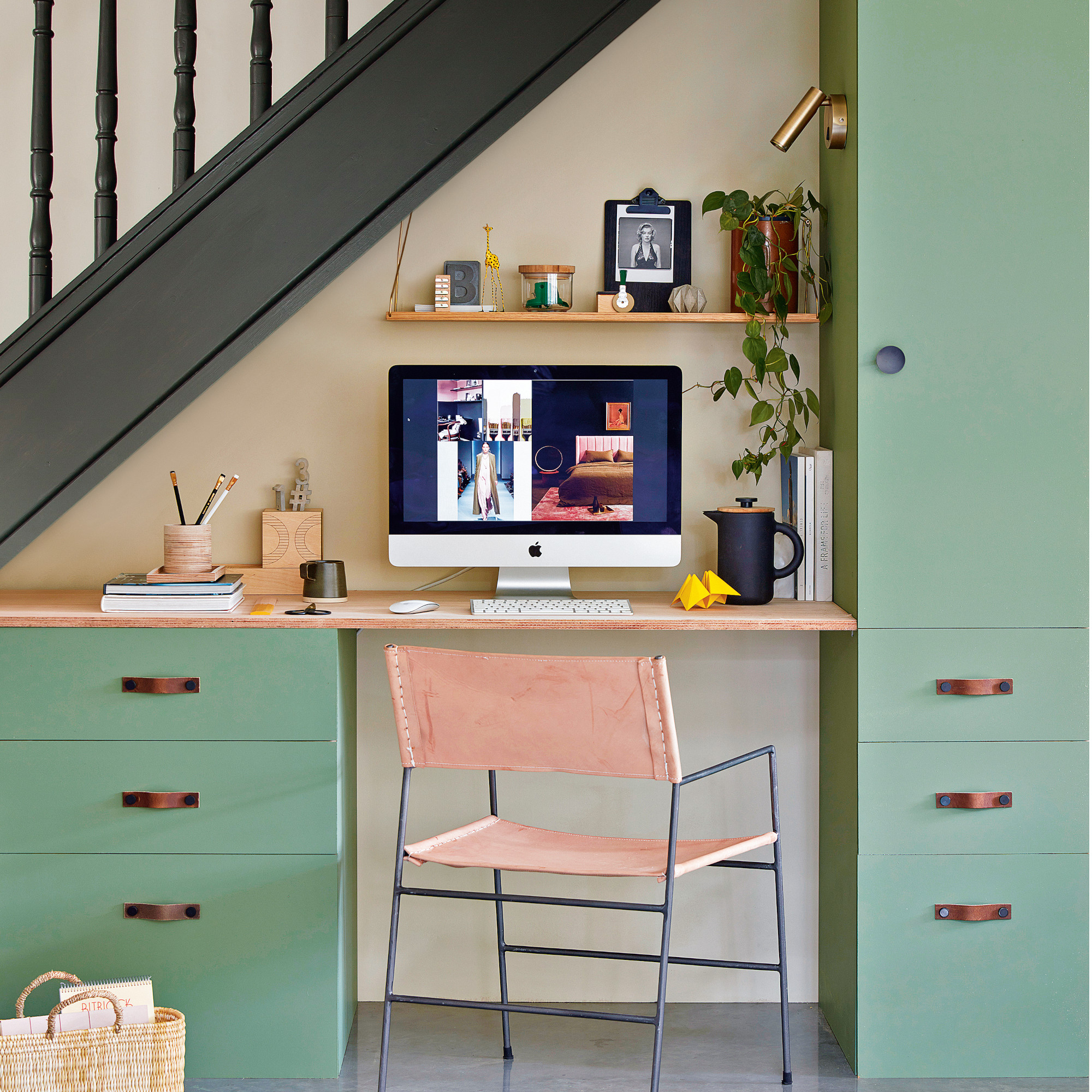
If you only own that desk from nine to five on Mondays to Fridays, this is how to stop your beautifully organised desk from becoming a hot mess:
Lisa Coe advises, ‘Add labels to each desk drawer so everyone knows where things belong. Allocate a magazine file to each family member, so everyone has space for their own items, too.’
Janine McDonald says, ‘If you need to retain original hard copies of documents, keep them all in one file with tabs for each section. As a backup, take photos or scan them and store these in a folder on your computer or phone.’
Chrissy Halton, a professional organiser at Organise My House, says, ‘To organise kids’ homework, have a container for each subject. My daughter’s doing her GCSEs and we have an under-desk set of drawers that holds a subject per drawer. This means she knows exactly where to find everything and it’s all in one place.’
7. Have a waste-management system
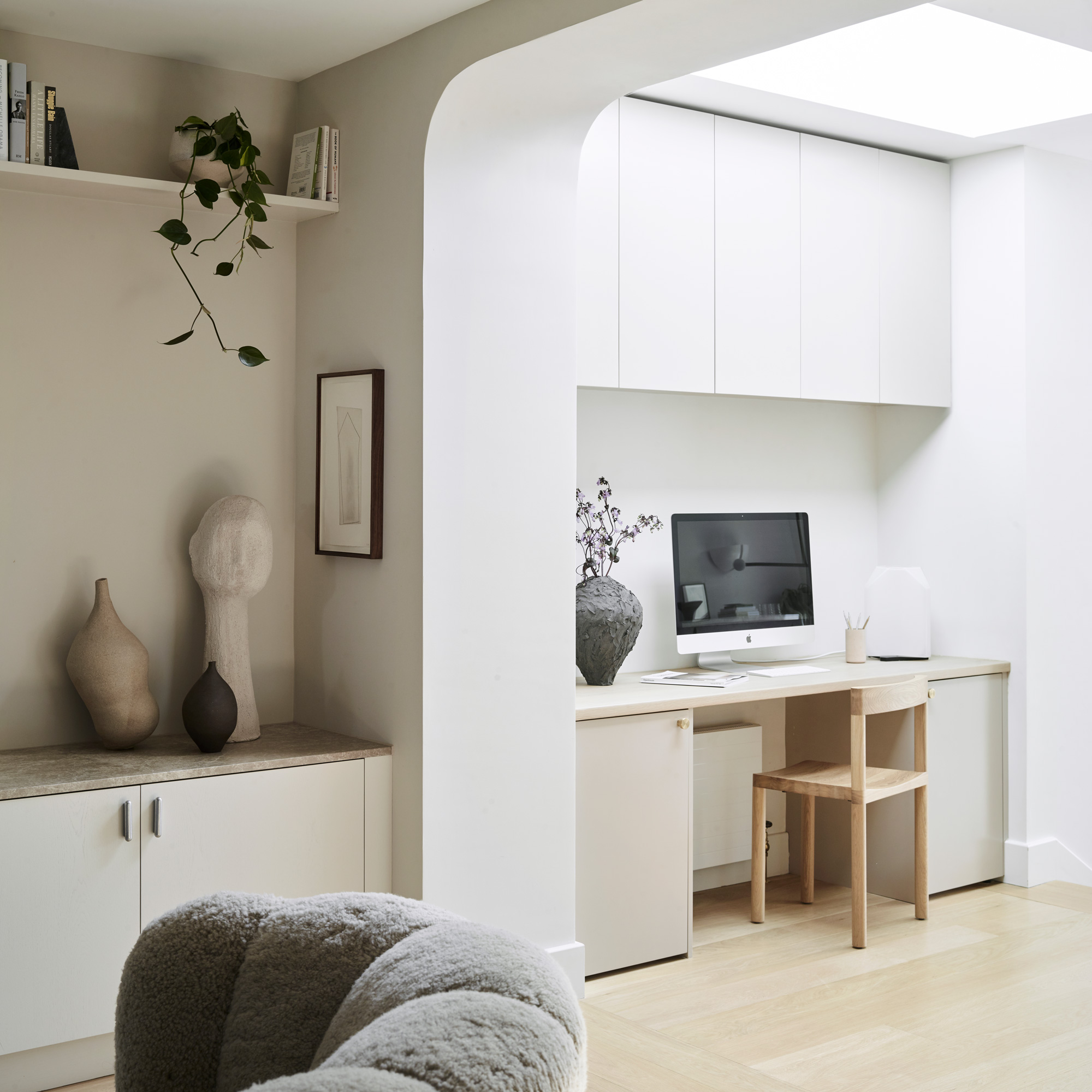
Without this, waste paper, toner cartridges and packaging will take up space on our desks.
In Sue Spencer’s experience, ‘A small bin or basket like this style from Dunelm that can be emptied daily is the best way to keep it under control. Chuck everything in as you’re working, then redistribute it into the recycling or general waste at the end of the day. For empty printer cartridges, have a storage box to keep them in until you have a batch to send off.’
Get the look
FAQs
How should items be arranged on a desk?
Katherine Blackler has a trick: ‘Rest your elbows on the edge of the desk and sweep your arms in a semicircle motion over the surface. This is the “prime property” of desk space and should contain key everyday items within half an arm’s length, such as your laptop, notepad and pen pot.
‘Then extend your arms and draw a larger semicircle. This area should contain the next level of items. For example, your desk lamp and urgent paperwork. What else is taking up space? If there are files you only need to consult periodically, move them to a shelf or drawer.’
How do you hide desk clutter?
Lisa Coe says simply, ‘The key to maintaining a clutter-free desk is using your desk drawers efficiently, to keep all your useful items close to hand but out of sight.’
For some people, though, a more mindful approach is needed. Katherine Blackler explains, ‘Some brains are wired to need visual prompts to get tasks done, so they’d be worse off hiding it all away! If you’re in that camp, your desk is likely to look “busier” than others. Using magazine files to stack your paperwork upright can stop it bleeding across the surface of the desk. You can also try to have all the most urgent stuff on the desk, then an overflow file stored nearby.’
How do you organise a desk without drawers?
Emily Mills recommends adding shelves around 25cm deep like these from Amazon to hold box files), storage boxes and a tray or mini filing cabinet. ‘Use nearby shelves for books, binders and reference materials, arranged by category for easy access.’
‘Add decorative storage boxes like these from Harris and Jones or magazine holders from Harris and Jones to shelves for keeping miscellaneous items, children’s school supplies and household paperwork. Label these for easy identification.’
Keeping file trays like these from Rymans or a small cabinet like this one from Bisley next to the desk will manage incoming and outgoing paperwork to keep your desk free of loose papers.’







